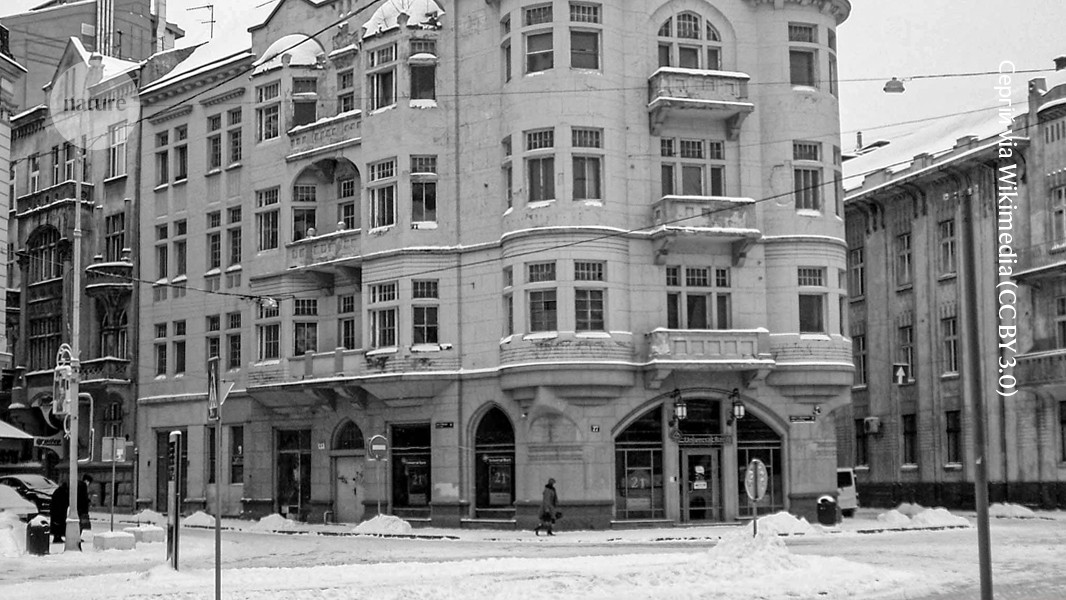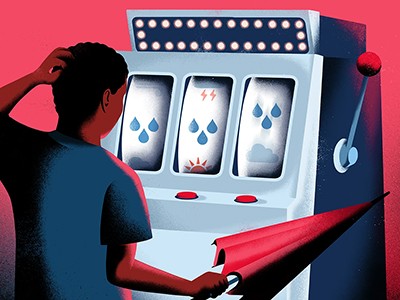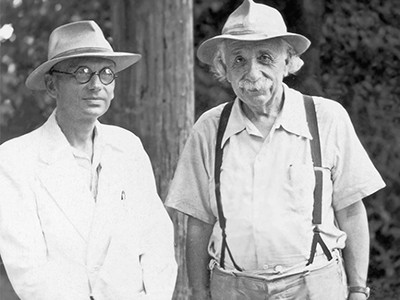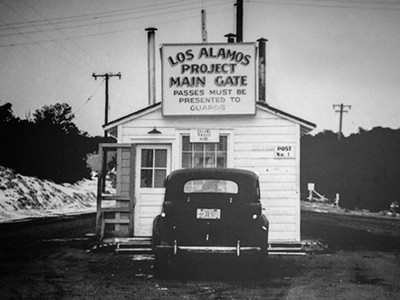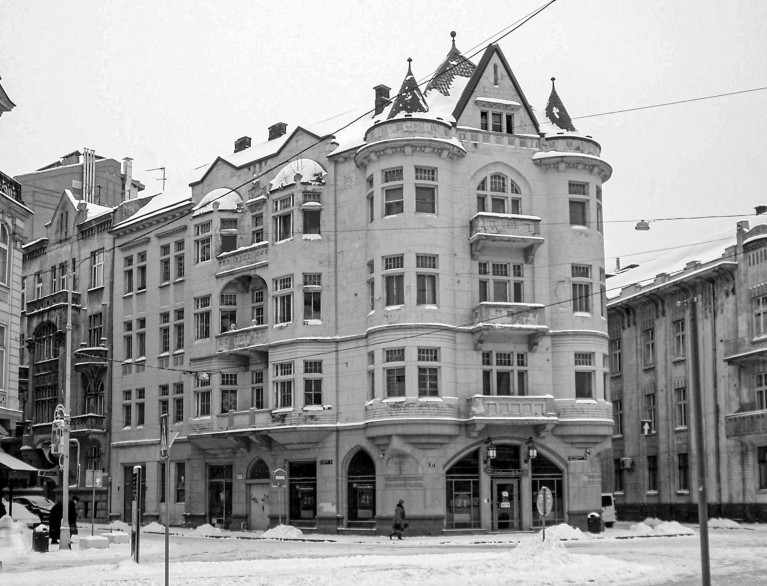
The Scottish Cafe, now in Lviv, Ukraine, housed mathematical discussions in the 1930s.Credit: Сергій via Wikimedia (CC BY 3.0)
On a Monday afternoon in April, the Szkocka Restaurant and Bar in Lviv, Ukraine, seems empty, except for two waiters, a maintenance worker on a ladder and the ghost of Frank Sinatra, whose song asks us to hold him in our arms. He’s not the only ghost in the place, though.
I’m in Ukraine, researching the history of Stanisław Ulam, a mathematician, physicist and computer scientist who was born in Lviv, then in Poland, in 1909. Ulam went on to work on the US Manhattan Project, designing nuclear weapons. He also developed the Monte Carlo method for solving computational problems and established many proofs in pure and applied mathematics.
But it was in this restaurant — known in the 1930s as the Scottish Cafe — that Ulam, along with other prominent mathematical figures such as Stefan Banach and Hugo Steinhaus, sat for hours, bandying about ideas. Together, the group contributed to many areas of mathematics, including set theory, probability, functional analysis, group theory and topology.
Why probability probably doesn’t exist (but it is useful to act like it does)
They would write their calculations in pencil on the marble tabletops. But Banach’s wife, Łucja Braus, dismayed that the work was getting wiped away by waiters, bought them a present: a lined notebook that would eventually be filled with mathematical challenges.
Any cafe patron could propose a solution to a problem for the chance to win a prize —often something small, such as a cup of coffee or a bottle of wine, or sometimes something more opulent or strange, such as, famously, a live goose.
These oddities helped to spread the book’s fame. And the collection of 200 or so problems became known as The Scottish Book, a version of which can still be purchased today.
In its pages are workings that led Ulam to later co-author a paper elaborating on the ‘hairy ball theorem’, which shows that, on any sphere in n dimensions, if there is a hair-like substance or current on it that is ‘combed’ in one direction, there will always be a place where the directional combing cannot continue — a cowlick, in other words. Far from being a barbering quirk, the theorem has had applications in fields such as meteorology and fusion energy. The seeds of Banach’s general theory of functional analysis are also in the Scottish Book.
Legendary atmosphere
Thus, in the 1930s, the Scottish Cafe became “the centre of [Lviv’s] — and for a while the world’s — mathematical universe”, as writer Chris Zielinski described in Histories of Computing in Eastern Europe (2019). Since then, universities, cities and companies have been trying, with varying success, to replicate this environment of a loose, productive exchange of ideas.
The spy who flunked it: Kurt Gödel’s forgotten part in the atom-bomb story
When I returned to the cafe the next day, Iryna Banakh (no relation), a mathematician at the Ivan Franko National University of Lviv, a few blocks away, told me a little bit about what went right.
Banach, who mentored Ulam and was the social centre of the group, “liked to work when it was very noisy”, she said, sitting at a table in the Szkocka. There was “a lot of music, a lot of conversations, and sometimes they played chess at the different tables”.
He “would spend most of his days in cafés, not only in the company of others but also by himself”, said the mathematician Andrzej Turowicz in Roman Kaluza’s book Through a Reporter’s Eyes (1996). “He liked the noise and the music. They did not prevent him from concentrating and thinking. There were cases when, after the cafés closed for the night, he would walk over to the railway station where the cafeteria was open around the clock. There, over a glass of beer, he would think about his problems.”
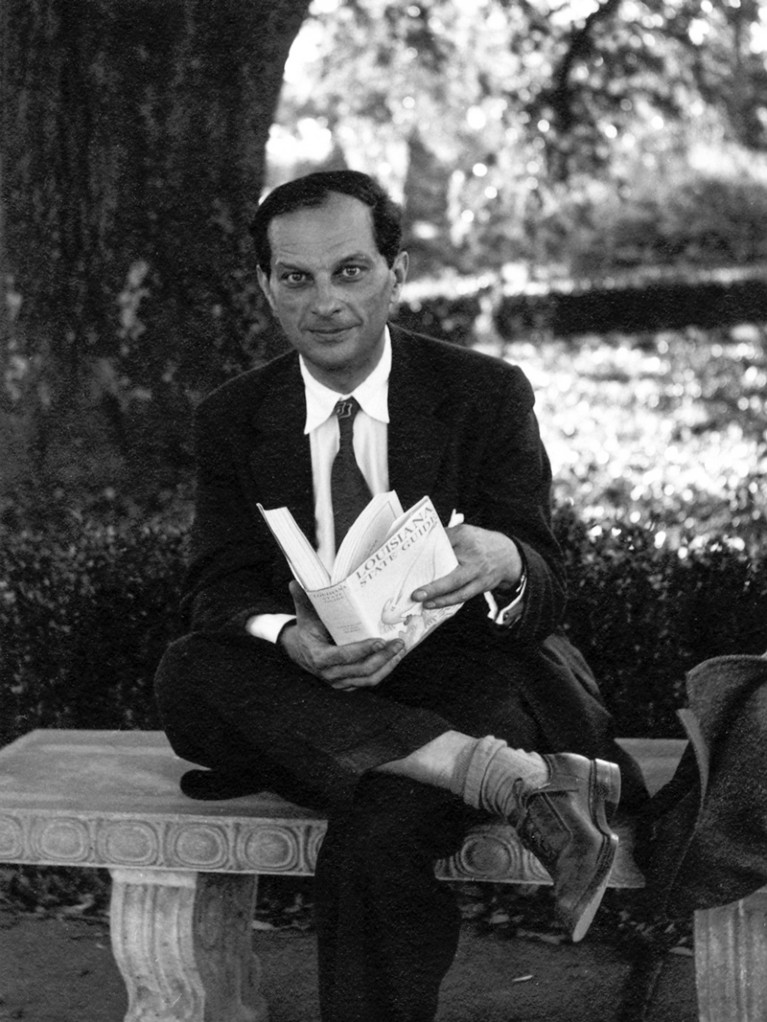
The Polish mathematician Stanisław Ulam, who frequented the Scottish Cafe.Credit: American Philosophical Society/Science Photo Library
If this emphasis on controlled chaos, social interaction and free-wheeling exploration sounds familiar, it’s because it is the basis for everything from child-led learning at Montessori schools to some courses at the University of Kansas in Lawrence, in which unconventional lecture-delivery models have been implemented.
But this is not necessarily a recipe for success in everyone’s hands. Although Ulam had wonderful things to say about environments full of genial geniuses in his autobiography, Adventures of a Mathematician (1976), he was scathing about the 1930s mathematical community at Harvard University, in Cambridge, Massachusetts. He found it full of overdone formality, bloated egos and people performing the act of work, rather than working productively and informally. However, he did find a better environment at the University of Wisconsin–Madison, where he taught in the 1940s.
There are some steps to nudge an academic community towards this type of collaboration.
Ingredients for innovation
Richard Florida’s 2002 urban-construction manual, Rise of the Creative Class, says that well-built communities — such as the walkable square around the Scottish Cafe — are more likely to provide people with places to exchange ideas than are automotive exurbs that encourage isolation. After traversing eight lanes of suburban traffic to reach a cafe, you’re unlikely to want to discuss Fourier transforms for five hours over coffees or beers.
Universities are beginning to see the importance of good infrastructure and quality of life for attracting students and faculty members. US college towns are increasingly working to replicate the pedestrian-accessible cafe environments found in Lviv and other European cities, such as Vienna and Prague. And some large institutions in small US cities, such as the University of Utah in Salt Lake City and the University of Maryland, College Park, have been encouraging the construction of tram and light-rail systems, viewing them as providing a competitive advantage.
Even in modern-day Lviv, which is already vibrant, there have been moves — in the middle of war, no less — to enhance that vibrancy with even better urban-rail infrastructure.
Born secret — the heavy burden of bomb physics
However, cities need to be positive, liveable places for everyone, not just those who can afford the latest Macbook. Indeed, the academics I talked with in Lviv made the point that the Scottish Cafe is now too expensive for late-night maths chats. Those have moved to a cheap pizza place elsewhere in the city, among other places, with Szkocka filling a more ceremonial niche for formal dinners in recent years.
In the 1930s, Banach chose the Scottish Cafe partly because it was cheap and would give him a lenient tab, unlike the cafe across the street, from which he fled when his debts grew too great. He was known to often linger over a single cup of coffee for hours at a time, spending barely any money.


